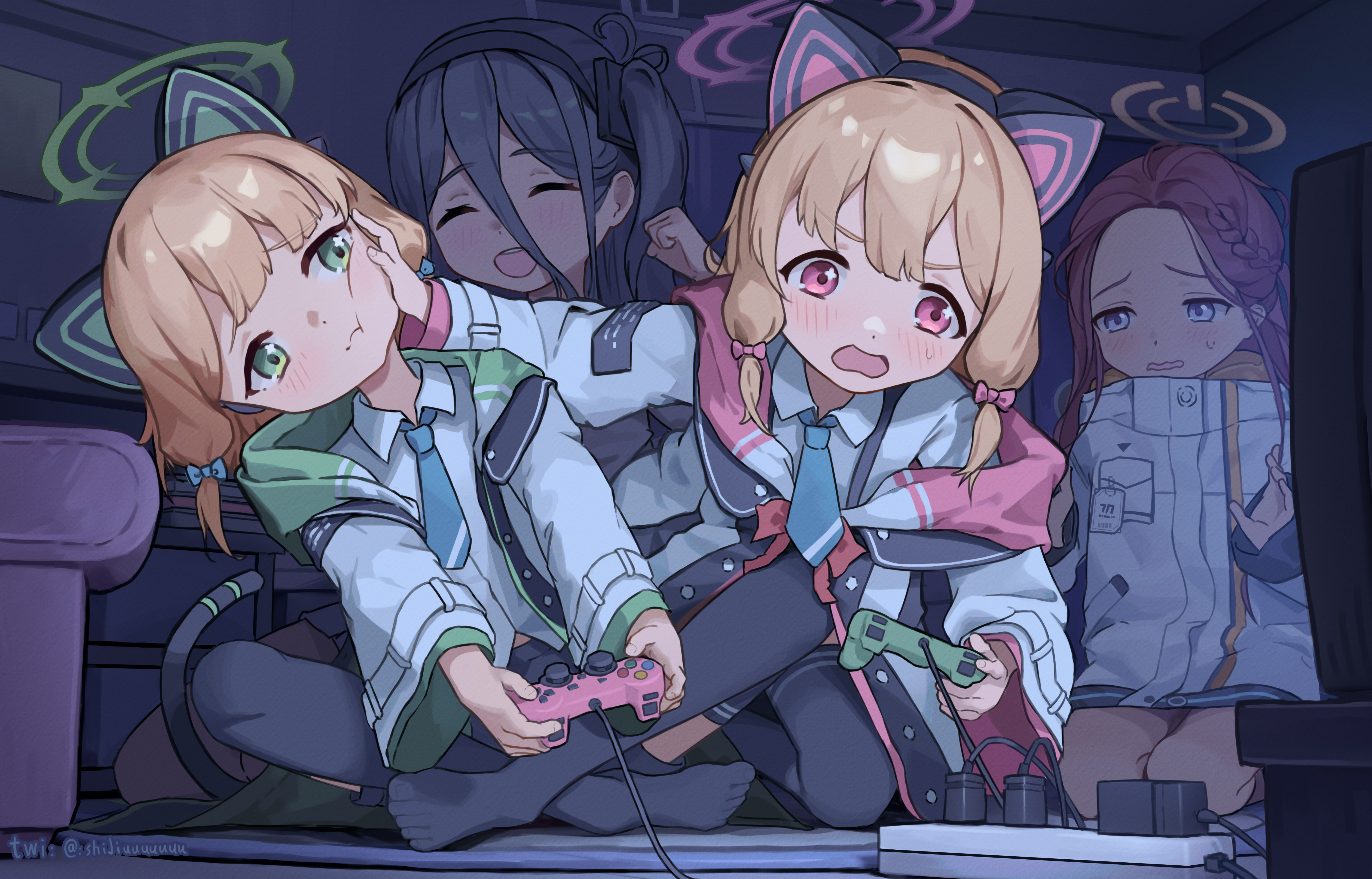/lbx - the main protagonist.jpg)
The always serious, no-nonsense, business-only main male protagonist. No wonder it is hard to wing in any romance into this anime.
Danboru Senki, or Little Battlers eXperience as it was titled in Animax Asia is the second consecutive Level-5 title I’m going to review today, right after Mobile Suit Gundam AGE. As you may have guessed, I only choose to watch this anime because I previewed some episodes in Animax Asia like Cardfight!! Vanguard is, and not because its storyline are made by the same organization that does Gundam AGE (I only know this when watching this anime). Just like the Gundam, this anime is a 2011 title, but it has no chance at all to dethrone Tiger and Bunny from this blog’s ‘Anime of the Year 2011’ throne. Nevertheless, Little Battlers eXperience (abbreviated LBX from now on) is still a decent series to watch.
/lbx - 12TB pendrive I want one of these.jpg)
Personally, the greatest device you can find in this anime version of 2050 is not the LBX or the fortified cardboard, but the 12 Terabytes pendrive as shown above. It is funny though that that pen drive still use USB connector instead of something like Thunderbolt connector. Transferring files into/from that pendrive will surely takes hours!
Story:-
38 years in the future, kids in that era has abandoned their touch-only iPhones and Samsung Galaxies in favor of flip phones with keypads that is common 50 years previously. The reason for this is that such phones are the only effective control method for the LBX, a miniature robotic toy that is the rage at that time. Our main protagonist would really like to have one of those toys, but his mother, exercising her role as a responsible parent, disallow him from having one. But one day, he meets a mysterious person under a bridge who then gives him a free LBX, and suddenly he find himself having to save the world with it…
Let just say that this anime is an amalgam of both Cardfight!! Vanguard (the characters) and also Angelic Layer (the plot device) with a ‘save the world’ plot and plenty of tournaments. And you would not be wrong either if you think that this anime shares the same demographic with Gundam AGE, but definitely not with Angelic Layer. The story itself is decent but sadly very predictable. If the writer think I cannot see the pivot of the antagonist identity from a hundred miles away, he/she will be for a shock.
As I mentioned before above, the main protagonist has to save the world with his LBX with a couple of side-kicks (thankfully there are no romance at all here), therefore there will be plenty of LBX battles as his team participates in LBX tournaments in-between of sneaking into buildings and sewers. And here comes another of my complaint about this anime: very many of the LBX battles in this anime are very poorly written. I am not talking about battle’s choreography here, but I am referring on how the battles are conducted to reach the ending that the writer intended for any given LBX battles.
A good example for this is the last two battles in the Akihabara tournament. The first one, between the main protagonist and the grandson of the main antagonist, was completely marred by a mid-tier finishing function technique used by main protagonist that somehow managed to take out his opposing team. While the opposing team do have flawed tactics, the usage of the said mid-tier finishing function by the main protagonist to end the battle isn’t exactly appropriate in that situation. When he first started the opening sequence for that particular finishing function, I exclaimed to myself “That technique will not work”. But it turned out to be working, and therefore I ![]() . If he uses one of his higher tier function techniques, that one-hit attack would have been more believable.
. If he uses one of his higher tier function techniques, that one-hit attack would have been more believable.
The second battle, between the main protagonist and the Master King, is much better, with actual working tactics by the main protagonist’s team against a stronger opponent. No need for blatant deus ex machina moments at all unlike the battle that happens before that one. And unfortunately for this anime, battles like this one are the minority unlike the battles that happened before this one. This is a shame because unlike Cardfight!! Vanguard (and just like Angelic Layer), luck doesn’t have a disproportionate role in LBX battles, with skills, LBX specs, and tactics being more important aspects of the battles. This anime would have been much better if the good writing in Cardfight!! Vanguard duels can be incorporated into many of the LBX battles here.
/lbx - one of the things the antagonist lackeys should learn to do more.jpg)
Another minor nitpick I have about this anime's storyline is the antagonist lackeys' preference to send LBXes to deal with intruders to their facilities instead of doing it themselves. The old-fashioned way of sending burly men in black to deal with intruders, like in the rare scene above, always works and would have thwarted the main protagonist's dream of saving the world from devastation.
Speaking about luck in Cardfight!! Vanguard, I would really wished Animax Asia to stop its misleading Cardfight!! Vanguard advertisement that claims that the game ‘isn’t about luck’. The way its gameplay are structured, luck can easily gazump any other factors in play in a Vanguard duel. The only way the Vanguard game can eliminate luck as the main factor that can determine the result would be to allow players to manually arrange the orders of the cards in the drawing deck before a duel started.
Character developments in this anime is completely different from what you can see in Cardfight!! Vanguard. In the latter, its main protagonist has never played the game before and have to learn his way to the top of the nationals with plenty of hard work, team play and heavy doses of luck. In this anime, the main protagonist is already a quite good LBX player and throughout the series, he only lost a major battle once. This fact means two consequences. This first one is the character development of the main protagonist is vastly inferior and nearly static when compared to his counterpart in Cardfight!! Vanguard. In fact, I think his two sidekicks has better character developments than him! Fortunately for him, this anime’s ‘substantial save the world’ plot means this anime can get away with being a story-driven series, covering the weakness in its main character.
The second one is his static character development highly likely contribute on the issue of poor writing in the LBX battle scenes I have mentioned above. The need to make him keep winning many battles against superior opponents caused the writer to write in some stupid scenes in them. After all, having a strong-from-the-start main protagonist is really hard for a storyline, with only Hellsing being the series that got it right.
The overall pacing in this anime is faster than Cardfight!! Vanguard’s, and that’s a good thing. Pacing is not only good inside LBX battles and tournaments, but also outside it in the general storyline. The flow of the storyline is good for at least the first half of the anime, but become slightly muddled after that. The ending is full with clichés and pretty much predictable as I mentioned above, but at least better than the one in Gundam AGE. And it turned out the ending is just an end to a very big arc, because there are already a second season underway, just like Cardfight!! Vanguard is. And I will definitely watch it when it finished.
/lbx - assassins nowadays use toys to do the job and thats why he failed.jpg)
Assassins of 2050 also use toys as the tool of the trade, and that's why he failed. What happened with the old-school way of using high-powered rifles?
Character Design:-
Actually, the character design in this anime has exactly the same template as Gundam AGE’s, and that’s not exactly suprising because of their Level-5 connections. Black hairs are also rare here, in this anime’s setting that takes place merely 38 years in the future (still not enough evolution for X-Rounder-like powers it seems). LBX designs are great too, with plenty of variations and probably better than mecha designs in Gundam AGE.
Voice Acting:-
Voice acting quality in this anime is decent overall; somewhere in-between Cardfight!! Vanguard (worse) and Gundam AGE (better). There are no outstanding voice acting gigs in this anime, but there is one major character with consistently wooden voice acting performance…
Music:-
The OST for this anime is good, especially for LBX battles scenes, and that’s all there to it. This is because the four OP/ED themes this anime has are at best, forgettable.
/lbx - an epic battle between humans and machine is about to begin here.jpg)
An epic battle between humans and machine is about to begin here! The humans are going to be crushed into mincemeats…
Animation/Direction:-
When watching Gundam AGE back then, there is something odd I have noticed about a certain animation technique Sunrise may have used but I didn’t make a comment about it in its review because I’m not certain what have really happened. But after watching this anime, I can confidently say that both titles has a very well done CGI + 2D animation integration, the best ever I have ever seen. But what makes the CGI sequences in these two anime titles different than what I have seen before in other CGI-employing anime titles I have reviewed before is that the CGI (mostly for mecha/LBX animations) are almost undistinguished in look and feel when compared to traditional 2D animations around it. They look so similar, I believe that the future where an anime series can be completely produced using CGI only is not that far off.
Meanwhile, 2D animation quality in this anime is decent, up to par with what you can see in Gundam AGE. Character animation is lacking a bit though, but not as bad as in Cardfight!! Vanguard. Choreography in action scenes (LBX battles of course) is done well too, especially in scenes where the main protagonist managed to get himself out from stick situations. The directing is flawless, especially with camera works in LBX battles, storytelling and pacing management.
Conclusion:-
7 out of 10. Not bad considering that the sport genre handicap has been applied to this anime. Maybe the next series I should watch is Inazuma Eleven?
/lbx - phone of the 2050s still looks like coming from the 90s though.jpg)
The most popular phones in 2050 looks suspiciously like phones that are popular in 2000s. Nokia may stage a comeback by then.
Shortlink: http://wp.me/prgSo-zU


/gundam age - the main male protagonist.jpg)
/gundam age - these lines right in the first episode shows exactly what its target demographic is.jpg)
/gundam age - and lines like this later in the series reinforced that fact.jpg)
/gundam age - this mobile suit transfer scene is the worst breaker of suspension of disbelief in the history of anime.jpg)
/gundam age - the third main male protagonist.jpg)
/gundam age - the best thing in the second arc.jpg)
/gundam age - this kind of presentation has never been seen in non-UC Gundam titles before.jpg)
/haruhi s2 - the title main female protagonist.jpg)
/haruhi s2 - a very apt description for her.jpg)
/haruhi s2 - the main male protagonist.jpg)
/haruhi s2 - scenes like this are much better than the main storyline itself.jpg)
/haruhi s2 - one thing that can be said, the first season bluray upscales really sucks just like kyoani luckystar BDs are.jpg)




















